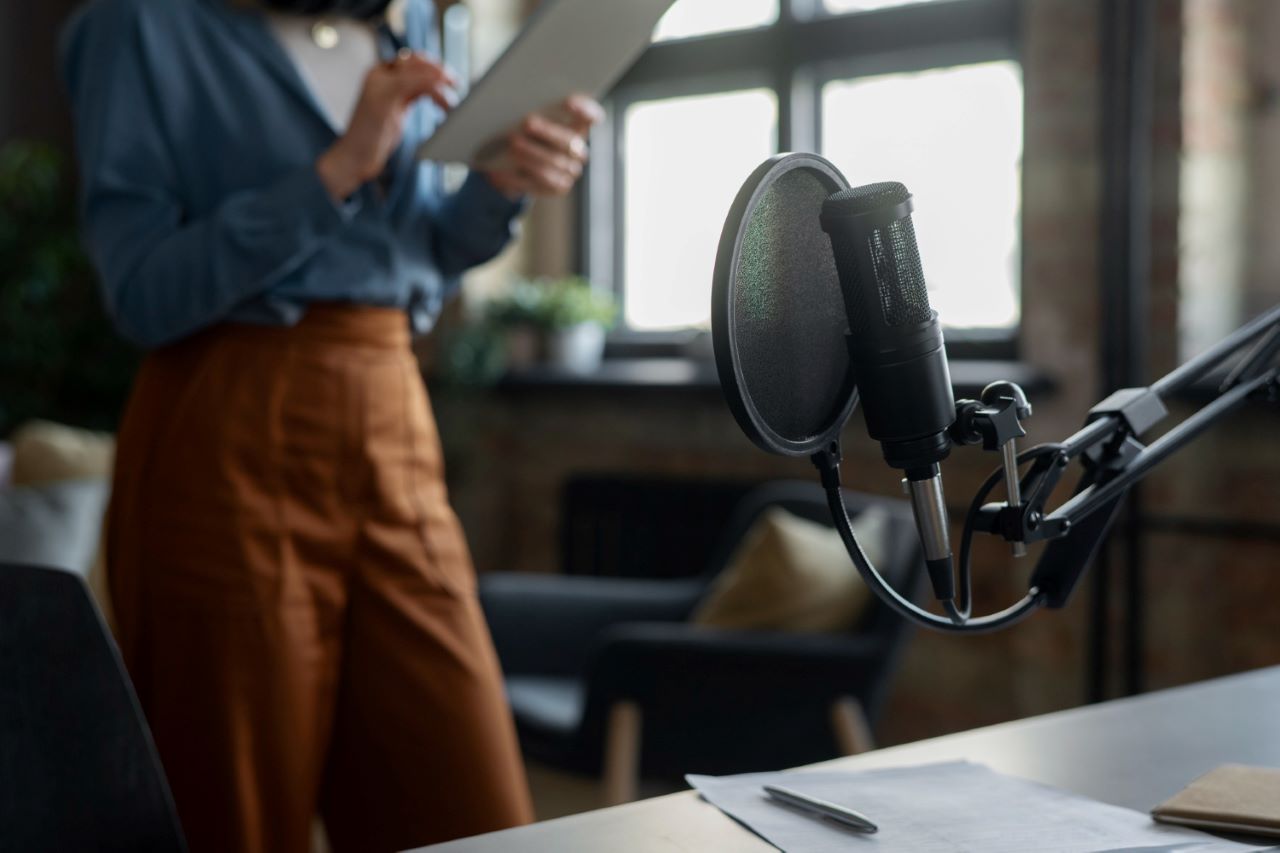We’re living in the golden age of podcasts, aren’t we? But wait a minute, before you dive head-first into creating your podcast series; it’s crucial to understand the potential challenges you could face. So, what are the disadvantages of podcasts? This article is here to dissect them for you.
Before you stop reading this in fear, remember this: understanding your challenges is the first step towards overcoming them. By acknowledging these obstacles early, you can plan effectively and take steps to avoid common pitfalls. This article’s goal is to help you understand the various disadvantages that come with podcasting and then guide you on how to overcome them.
The Disadvantages Of Podcasts
All right, now that we’ve established why you need to keep reading, let’s get into the meat of this article: the disadvantages of podcasts. Podcasts have become an increasingly popular medium, but like all things, they’re not perfect. The issues vary from limited accessibility and reach to resource-intensive nature, lack of visual elements, content saturation, and inconsistent revenue streams.
Each of these obstacles poses a unique challenge for podcasters. By gaining a comprehensive understanding of these difficulties, you’ll be better equipped to navigate the podcasting world. So, without further ado, let’s dive in and examine each of these challenges in more detail.
1. Limited Accessibility And Reach
One of the main disadvantages of podcasts is their limited accessibility and reach. It’s no secret that while podcasts have grown in popularity, they still don’t have the same reach as other media formats.
There are several reasons for this limited reach. Some are technical, while others are a result of the way audiences are segmented. Furthermore, regional and linguistic barriers also contribute to the restricted accessibility of podcasts. Now, let’s delve into these aspects one by one.
Technological Limitations
Podcasts, unlike radio or television, require a device with internet access for listening. Not everyone has access to such technology or a stable internet connection. For instance, data from the Pew Research Center shows that as of 2019, about 10% of American adults were still digitally disconnected.
For these people, tuning into a podcast is not as simple as turning on the radio, TV, or other devices. This digital divide poses a significant barrier to video podcasts achieving the same level of reach as more traditional media formats.
Audience Segmentation
Podcasts, by their nature, attract a niche audience. Unlike mass media, which appeals to a broad demographic, podcasts are often specific in their content, targeting a particular interest or demographic group.
While this specificity can be an advantage when it comes to cultivating a loyal podcast listener base, it also limits the overall reach of a podcast. A podcast about, say, underwater basket weaving might have a passionate, engaged audience, but that audience is inherently smaller than the audience for a more general-interest program.
Regional and Linguistic Barriers
Due to the nature of language and regional availability of podcasting platforms, there might be limitations on who can access your content. If your podcast is in English, non-English speakers will have difficulty understanding it. Plus, not all podcast platforms are available globally, which means potential listeners in some regions may be unable to access your podcast even if they want to.
2. Resource-Intensive Nature

Image by boyarkinamarina on Freepik
Next up, we have the resource-intensive nature of podcasting. And by resources, I mean time, money, and technical skills.
Creating quality podcast audio/video files isn’t as simple as just recording yourself talking and hitting the upload button. There’s a lot more that goes into it, all of which requires substantial resources. Let’s take a closer look at what I mean.
Time Consumption
Producing a podcast can be a significant time investment. Planning, recording, editing, publishing, promoting — each step takes time. For instance, a one-hour episode might take anywhere from four to six hours to produce, not including the time spent on promotion.
And if you’re thinking of cutting corners to save time, think again. The quality of a podcast is often directly proportional to the amount of time and effort put into its production. Listeners can tell when a podcast is hastily put together, and they’re unlikely to stick around if the quality isn’t up to par.
Financial Costs
While it’s possible to start a podcast on a shoestring budget, producing a high-quality podcast can be costly. There are several costs to consider, including production and distribution costs and promotional costs.
- Production and Distribution Costs: These costs can include everything from microphones and recording software to podcast hosting fees. And while some of these costs are one-time purchases (like a good microphone), others are ongoing (like hosting fees).
- Promotional Costs: Promoting a podcast also requires an investment. This could be in the form of paid advertising, hiring a social media manager, or investing in SEO services to increase your podcast’s visibility online.
Technical Skills Required
Lastly, podcasting requires a certain level of technical know-how. You need to know how to record and edit audio, how to publish your podcast on various platforms, and how to promote it effectively. While you can learn these skills over time, it’s worth noting that there is a learning curve involved.
3. Lack Of Visual And Interactive Elements
Podcasts, being audio-only, need more visual and interactive elements than other forms of media. This lack of visual and interactive content can impact engagement, limit your content presentation, and make measuring audience feedback challenging.
The Impact on Engagement
Without visual cues, podcasts rely heavily on the host’s ability to engage listeners through storytelling and audio cues. While some hosts excel at this, it’s a skill that often needs to be developed over time.
Limitations in Content Presentation
Similarly, some content may translate poorly to an audio-only format. For instance, if you’re trying to explain a complex process or concept, it might be easier for your audience to understand if they can see a diagram or infographic. But with audio-related programs, you’re limited to verbal descriptions.
Challenges in Audience Measurement and Feedback
It also requires more work to measure audience engagement with podcasts. Sure, you can see how many times an episode was downloaded, but you can’t see how many people listened to the whole thing, skipped parts, or clicked on your call to action.
And while some podcast platforms are starting to provide more in-depth analytics, they still need to catch up to the metrics available for other forms of digital content.
4. Content Saturation And Discovery Difficulties

Image by DCStudio on Freepik
As more and more people jump on the podcast bandwagon, content saturation becomes a real issue. There are now over 2 million podcasts available on Apple Podcasts alone. That’s much competition for listeners’ attention.
Coupled with this is the difficulty of podcast discovery. Unlike with text-based content, it’s not as easy for potential listeners to stumble upon your podcast through a Google search.
The Podcast Boom and Overcrowded Market
The barrier to entry for podcasting is relatively low, which has led to a surge in the number of available podcasts. While this is great for diversity, it also means that your podcast is one in a sea of many.
SEO Challenges and Discoverability Issues
Because podcast content is audio-based, several search engines can’t crawl it like they can text. This makes discoverability a challenge. While show notes and transcriptions can help, they often require extra time and effort to produce.
Difficulty in Differentiating and Establishing a Unique Voice
With so many podcasts out there, it cannot be easy to stand out from the crowd. Establishing a unique voice and point of view is critical, but it can be challenging to achieve, especially in saturated categories.
5. Inconsistent Revenue Streams
And last but not least, we need consistent revenue streams. The financial stability of podcasts can be volatile, with advertising revenue, sponsorships, and crowdfunding/donations often fluctuating.
Unpredictable Advertising Revenue
Many podcasts rely on advertising for income, but ad rates can be unpredictable. They often depend on download numbers, and fluctuations in your audience size can lead to significant income variance.
Challenges in Securing Sponsorships
Sponsorships can provide a more consistent income stream, but securing them can be challenging, especially for new or niche podcasts. Even when you do secure sponsorships, the terms can vary, and there’s often much legwork involved in managing these relationships.
The Instability of Crowdfunding and Donations
Crowdfunding and donations can be a great way to generate income for your own podcast, but they could be more stable. Crowdfunding campaigns can be hit or miss, and donations can dry up if listeners decide to tighten their belts.
How to Overcome the Disadvantages of Podcasting?

Image by Freepik
So, we’ve looked at the dark side of podcasting. But remember, with every challenge comes an opportunity for growth. The key is to understand these disadvantages and actively seek out ways to overcome them. And that’s exactly what we’re going to discuss in this section.
Adopting Best Practices for Podcast Production
The first step in overcoming the challenges associated with podcasting is to adopt best practices for podcast production. This means investing time in pre-planning and content strategy and maintaining a consistent schedule and quality.
- Pre-planning and Content Strategy: Taking the time to plan your podcast before you start recording can save you a lot of headaches down the line. Develop a time-consuming content strategy that outlines what topics you’ll cover, who your target audience is, and how often you’ll release new episodes.
- Consistent Schedule and Quality: Once you start your podcast, it’s crucial to maintain a consistent schedule and quality. Listeners appreciate consistency and are more likely to stick around if they know they can expect new episodes regularly.
Exploring Alternative Revenue Streams
Next, consider exploring alternative revenue streams. Advertising and sponsorships are great, but they shouldn’t be your only source of income. Look into subscription models and premium content and services.
- Subscription Models: Subscription models, where listeners pay a monthly fee for access to your podcast, can provide a consistent revenue stream. While not all listeners will be willing to pay, those who do are likely to be your most engaged and loyal audience.
- Premium Content and Services: Similarly, offering premium content or services can be a great way to monetize your podcast. This could be in the form of bonus episodes, merchandise, or even consulting services related to your podcast’s niche.
Related: How to Make Money Podcasting
Improving Podcast Discoverability
Last but certainly not least is improving podcast discoverability. SEO isn’t just for blogs and websites – it can help your specific podcast, too. Couple this with active promotion and social media engagement, and you’ve got a recipe for success.
- Leveraging SEO Techniques: SEO for podcasts typically involves optimizing your show notes and website for relevant keywords. You should also submit your podcast to as many directories as possible to increase your visibility.
- Active Promotion and Social Media Engagement: Don’t just rely on organic search to bring in listeners – actively promote your podcast on social media and other channels. Engage with your audience and encourage them to share your podcast with others.
Related: How To Build A Podcast Audience
Conclusion
And there you have it. Podcasting, like anything worth doing, comes with its own set of challenges. But with understanding, planning, and a bit of creativity, you can overcome these obstacles and create a successful podcast that resonates with your audience.
So, are you ready to face the challenges head-on and start your podcasting journey? Remember, the world needs your unique voice and perspective. Go ahead and share it with us. We’re all ears.